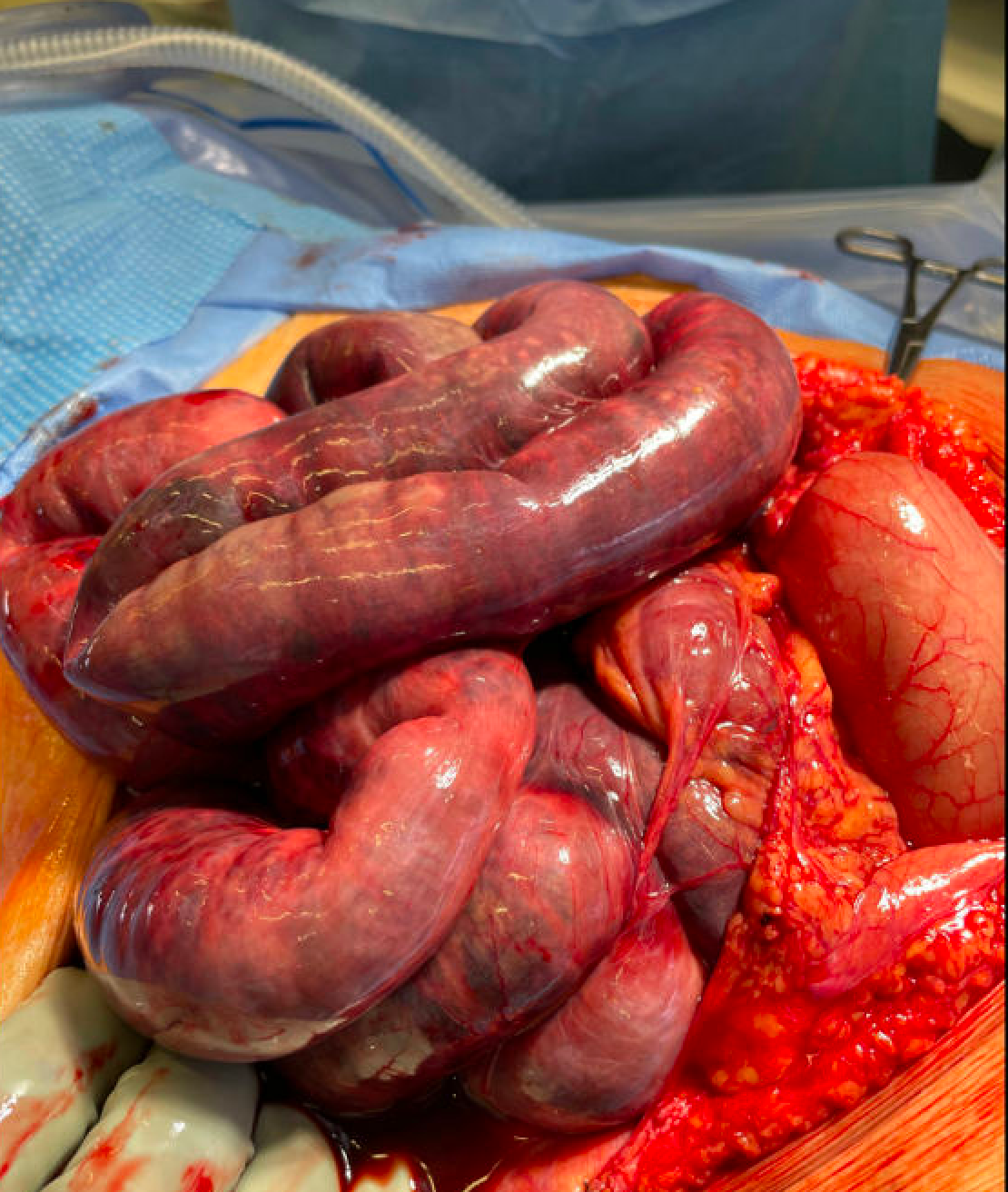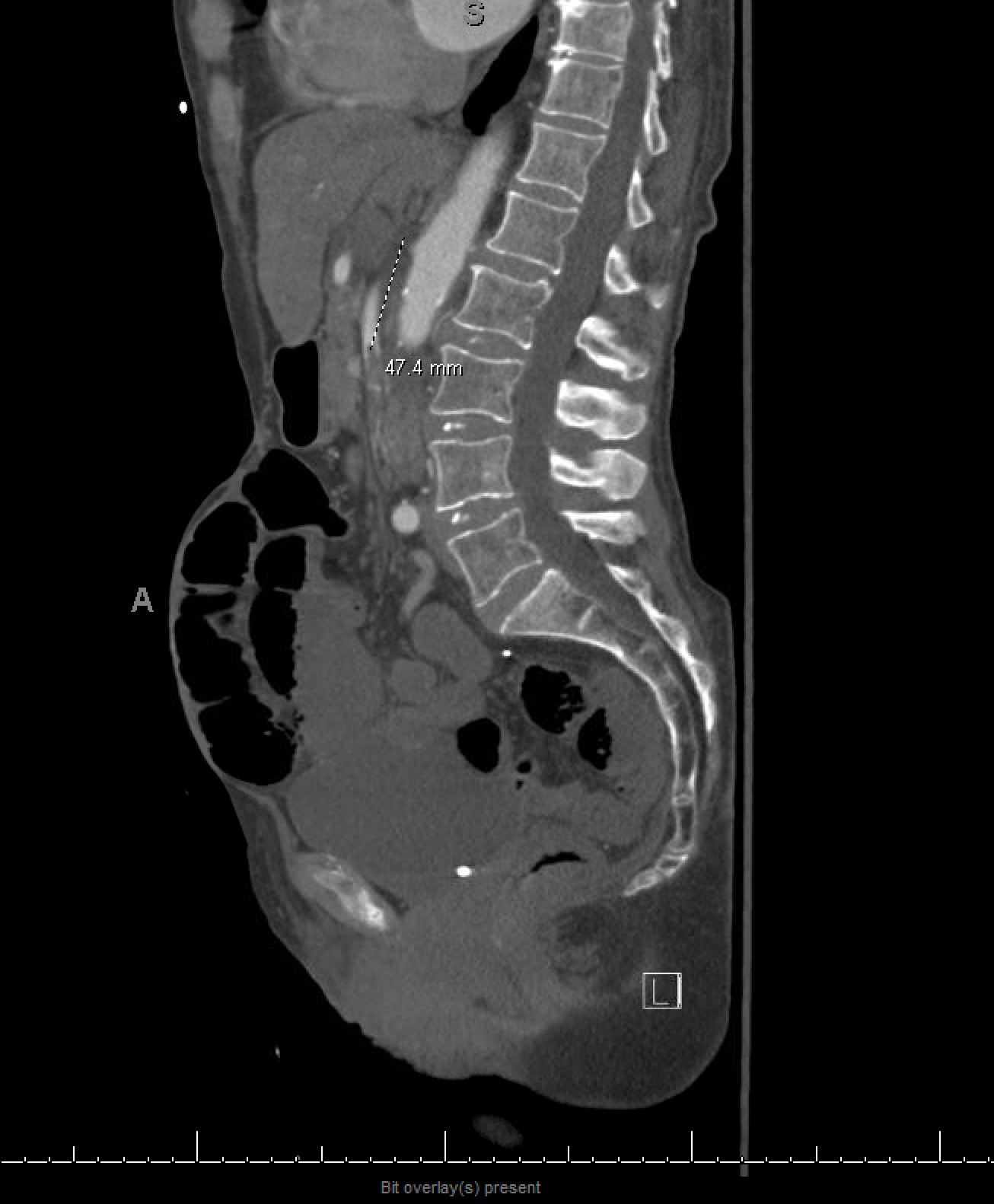Case Presentation: We present the case of a 74-year-old female with a past medical history of colon cancer status post left hemicolectomy who presented with severe abdominal pain for the past six hours associated with non-bloody loose stools. She was tachycardic but hemodynamically stable. The abdomen was soft and non-tender with hypoactive bowel sounds. However, her abdominal pain was out of proportion to the exam. In a setting of nonspecific abdominal signs and elevated lactate of 2.8 mmol/L, a computerized tomography angiography (CTA) was ordered, demonstrating a nonocclusive superior mesenteric artery thrombus, 4.5 cm distal to its origin, extending to the proximal branches. The patient underwent an emergent exploratory laparotomy revealing hemorrhagic ascites fluid with necrotic and nonviable terminal ileum, right colon, and transverse colon. The previous colorectal anastomosis site was also noted to be nonviable. She was taken to the surgical intensive care unit but remained hypotensive despite vasopressors. The patient was transitioned to comfort care, and she passed away less than 24 hours after her presentation.
Discussion: Acute Mesenteric Ischemia is a rare, life-threatening vascular emergency due to sudden reduction or cessation of intestinal blood flow with an overall mortality of 30% to 80%. There are only a few documented cases of AMI, as it accounts for only 0.1% of hospital admissions. The diagnosis is very challenging due to the lack of specific clinical signs, often leading to the diagnosis at an advanced stage. The mortality of acute mesenteric ischemia remains very high despite advances in the understanding of pathophysiology, diagnostic imaging techniques, and intervention. Since many of the signs and symptoms of AMI are common to other abdominal pathologies, such as acute small bowel obstruction and pancreatitis, this can cause a delay in diagnosis and treatment. In the absence of specific diagnostic markers and clinical signs, early imaging is the key to promptly diagnosing AMI. Even though most patients with suspected AMI undergo diagnostic imaging with CTA, a small subset of patients with clinical signs of advanced bowel ischemia (peritonitis) or radiologic signs (free air or severe pneumatosis) can be directly considered for exploration, which can be viewed as a diagnostic and therapeutic modality. This case demonstrates the importance of considering AMI in patients with a high level of clinical suspicion, even in the absence of known risk factors such as atrial fibrillation or a history of atherosclerotic disease, as a rapid diagnosis is essential to prevent mortality.
Conclusions: Even though acute mesenteric ischemia is an uncommon disease, it is almost always life-threatening with mortality rates up to 50% despite treatment. Hence, cases with high clinical suspicion should be approached aggressively, as early and timely treatment can be potentially life-saving.


